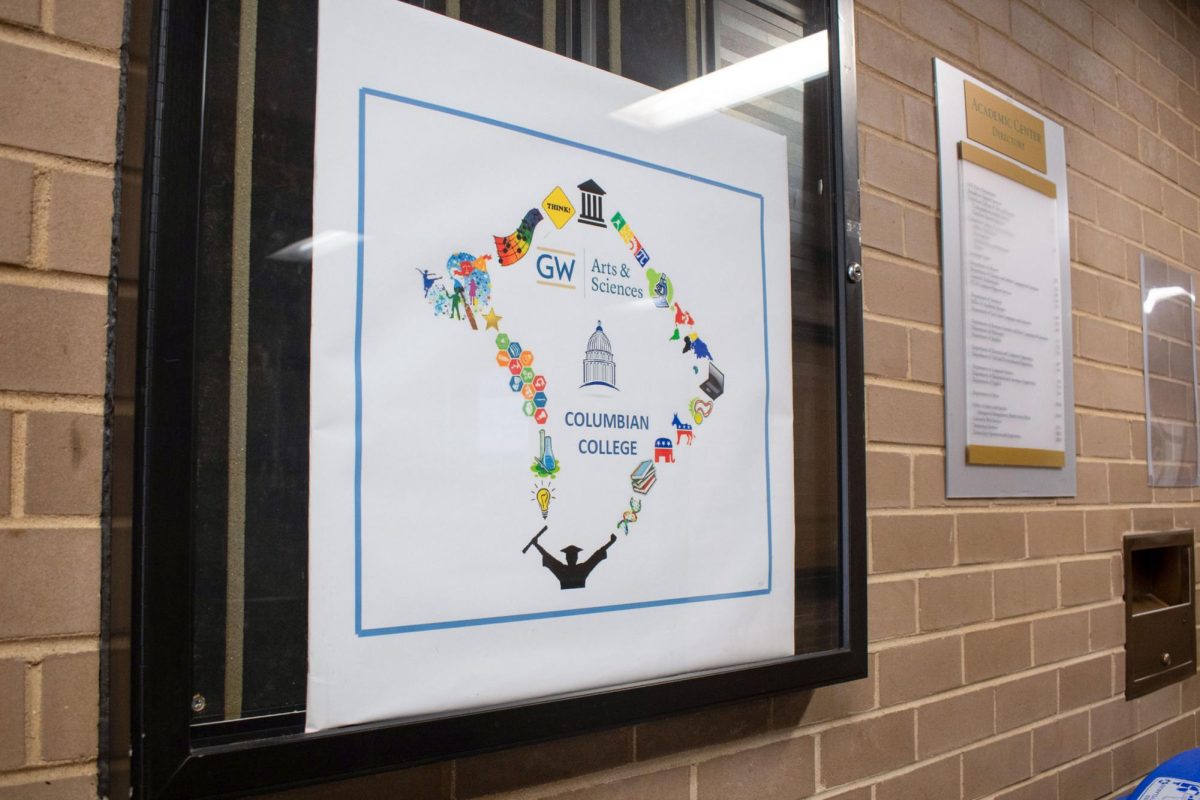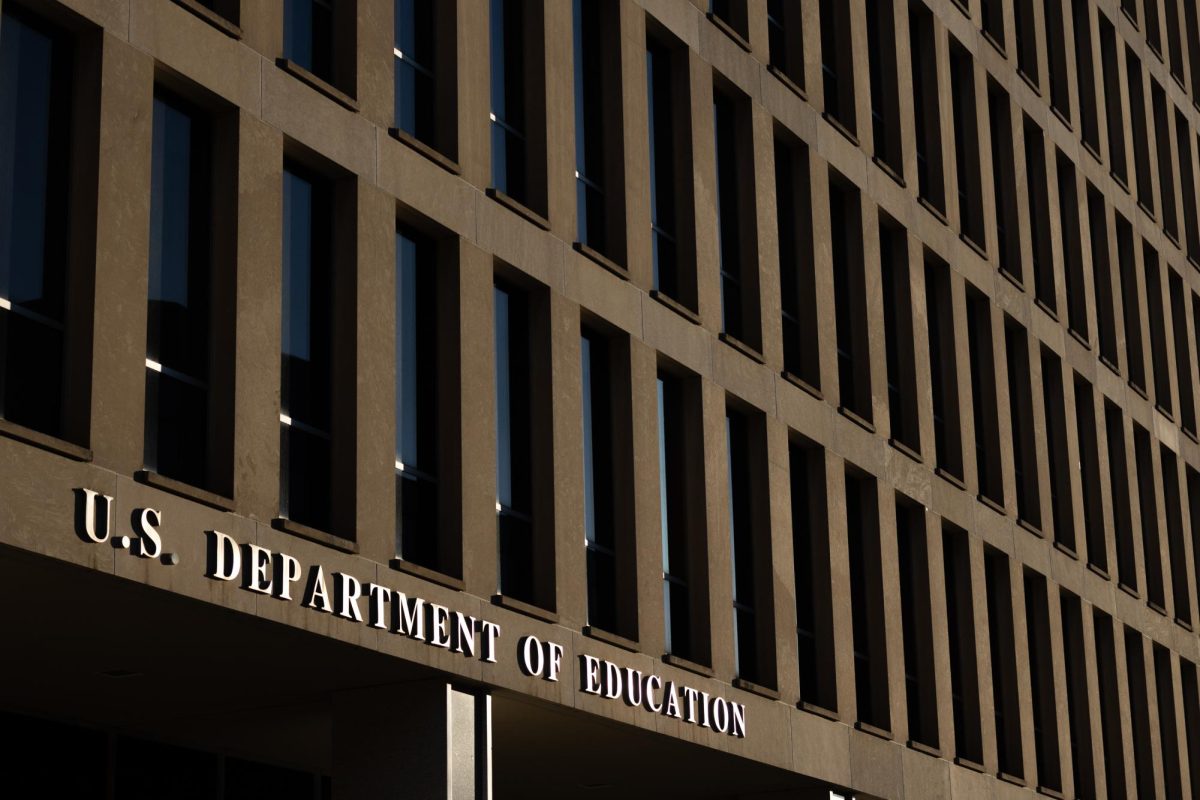
Four years ago, GWizard machines were state-of-the-art technology at GW.
GWizard machines were booths posted at the Marvin Center, the Academic Center and Thurston Hall where students could punch in their student identification numbers and print out their schedules and account balances. After students completed the early-morning phone registration and heard, Thank you for using the GW touch-tone system, they waited 10 minutes and sleepily went to see if the Wizard had their schedules.
Today, with a laptop computer, students can register without getting out of bed. Log on to the GWeb system and students can register, find classes, print information about classes and see account holds. Next year, the GWeb system will expand to include administrative software for faculty, a virtual campus tour and online freshman advising.
The GWeb site is only a small part of GW’s advancement in technology. Nearly all residence halls are wired with fiber Internet connections. Professors are using audio and video in classes. In a few years, wireless connections will be seen throughout Foggy Bottom.
According to the 1999-2000 Student Association Student Budgetary Priorities survey, students ranked academic technology sixth – above athletics, residential life and security – among their high priorities for GW.
Students clearly feel that the University should invest resources in academic technology, according to the survey. Students believe that their classes should reflect the fast pace of technological advancements.
GW administrators say investing resources in technology is exactly what is planned.
David Swartz, GW’s chief information officer, said the University has made tremendous strides in technology during the past few years.
Who would have guessed five years ago where we would be today, he said.
Learning online

GW has about 9,000 fiber-optic cable connections on campus, which include the connections in the residence halls, classrooms and administrative buildings.
The highways are in place that will allow us to do all of the neat stuff, Swartz said.
He said new fiber connections will allow GW’s Internet to grow – making it more reliable and much faster.
Vice President Al Gore introduced the Internet 2 plan – or the next generation of the Internet – in 1998. It was a response to the growing demand for faster and more efficient high-speed access than the original Internet, which was established more than 20 years ago by research institutions. Swartz said Internet 2 will probably be commercialized by 2003.
It will be able to handle huge amounts of data, he said.
When Internet 2 is in place, the same amount of information that would take a 56k modem 24 minutes to download, an Internet 2 connection will handle in a second.
When the Internet can handle that huge amount of information, the concept of the virtual classroom and the virtual university becomes possible, Swartz said.
Audio and video on the Internet is now limited to small clips. As the Internet is able to handle more information, students and faculty are able to use more audio and video files in the classroom.
Swartz said he does not foresee a virtual university on the undergraduate level because part of the undergraduate experience is about community. But virtual degrees may become an option for graduate students.
It’s like Barnes and Noble versus Amazon.com, he said. Students are getting the same product but by a different experience.
Swartz said the virtual classroom will impact the undergraduate world, as students will be able to take virtual classes anywhere in the world in addition to their regular coursework.
The virtual university is going to happen, he said.
As technology advances, it will provide students with the opportunity to design their own curriculum. Swartz said he envisions students would choose their own courses of study with a mentoring system.
In the classroom
Currently, 10 classrooms at GW are considered electronic, equipped with a projection system that is capable of showing videos and other multimedia presentations.
Swartz said if the University makes 27 percent of classrooms electronic, they will serve 45 percent of students.
Swartz said the next step in classroom technology is wireless connections. All connections at GW are fiber, he said. Adding wireless connections to the Internet would not replace any existing technology – it would just be an addition to the existing structures.
But wireless connections are a few years away.
Here’s how it will work: a wireless connection, sort of like a transmitter, is mounted in a room. This connector is wired into the University’s system so students with a laptop could walk into this wireless room and use the Internet.
Swartz said teaching faculty about new technology is a priority. Each summer, he said, the University conducts seminars to familiarize faculty with classroom technology. This summer, he said he hopes to have 200 faculty in the program.
Keeping up

Prometheus, the Web-based system in which faculty members can post syllabi, grades and assignments, only had 160 classes last year. This year about 1,400 courses are posted on Prometheus. He said as much as half the faculty uses Prometheus in some way.
But as the traffic increases dramatically on Prometheus, bumps on the information highway do occur. On Feb. 9, the Prometheus system went down for about two hours.
The failure resulted from minor adjustments that we made to the database to try and increase performance, Bo Davis, lead developer of the Prometheus development team, wrote in a message posted on Prometheus. Prometheus is constantly hitting usage records.this semester we are averaging 2,500 unique users a day.
Though burgeoning technologies are exciting, Swartz said staying up with the basics is important.
We’ve got Internet usage doubling and tripling.that has to be stabilized first.
According to the proposed technology initiatives, as e-mail volume doubles every year, GW needs to increase its system capacity to handle the increase from 30,000 users.
E-mail should be a top priority, according to the Student Association survey. It is unreliable, slow and frustrating. If students and professors are to continue using University e-mail as a means of communications, the e-mail system should be fixed.
As new generations of technology emerge every three to four years, replacing computers and servers becomes expensive.
Swartz said the University is growing at such a fast rate, administrators must sometimes delay new technology because they have to stabilize the existing technology and still stay within budget.
On campus
One of the largest growing segments of the University is residential life, and technology for that sector is upgrading along with it.
Alexa Kim, director of Student and Academic Support Services Communication and Technology, said the new interconnectivity the Web brings has impacted students’ academic and social lives.
The University upgraded its residence halls in a short time span. The first three halls went online in 1997. Currently, all residence halls except Riverside Towers and the Aston have connections. She said in the residence hall system there are nearly 4,000 connections.
Nearly every residence hall is wired and every student has cable and their own phone and Internet lines.
We’re wired to the teeth, Kim said. Everything is fiber.technology amenities have shot through the roof.
She said freshmen entering GW now have higher expectations for technology. E-mail changed the way the University works. Prospective students now communicate with GW via e-mail, which was almost unheard of five years ago. During Colonial Inauguration, freshmen are given information that specifies what type of computer they should purchase.
SASS Comm Tech, which manages ResNet – the high-speed Internet
connection in the residence halls – has two full-time technicians and a hotline to troubleshoot student computer issues.
And students do have computer issues. According to Swartz’s report to the Board of Trustees Committee on Infrastructure and Information Technology, the GW help desk receives about 290 calls, 60 e-mails and 950 hits on its virtual help Web page each day.
Kim said last year 60 to 70 percent of the student connections were being used. Now, 70 to 80 percent of connections are being used.
In the future
Improving technology is vital in order to turn out a student who is competitive in the job market, Kim said.
Technology moves quickly, Kim said. Humans have to catch up with it.
Kim said while the 18- to 24-year-old group is more technologically savvy than any other age group, technology in the future will integrate into daily life for all ages.
Kim said technology right now is in a burst phase, and in a few years the electronic industry will set more standards.
But as GW invests into new, cutting-edge technology, it must temper it to meet the demands of students, Kim said.
We have to apply technology to human capability and human need, Kim said.






